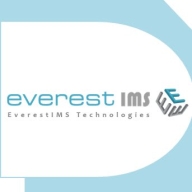

Datadog and Infraon IMS are both competitors in the IT monitoring and management space. Datadog is ahead with robust cloud integrations and ease of configuration, whereas Infraon IMS excels in providing detailed network visibility and tailored dashboards for specific business needs.
Features: Datadog offers comprehensive hosted monitoring with sharable dashboards, intuitive metric alerts, and seamless cloud service integrations. Infraon IMS provides customizable dashboards, role-based access, and detailed localized network insights.
Room for Improvement: Datadog could improve with more granular dashboard controls, real-time usage insights, and better integration capabilities. Infraon IMS should enhance its graphical interface for SNMP configuration and expand AI capabilities for predictive analysis.
Ease of Deployment and Customer Service: Datadog provides flexible deployment options across public, private, and hybrid clouds, with excellent customer service. Infraon IMS focuses on on-premises and private cloud deployments, offering good customer service but occasionally slower technical support.
Pricing and ROI: Datadog uses a flexible, usage-based pricing model, potentially costly without careful monitoring, suitable for scalable environments. Infraon IMS offers a cost-effective licensing model based on devices or users, ideal for smaller infrastructures.
| Product | Market Share (%) |
|---|---|
| Datadog | 3.1% |
| Infraon IMS | 0.2% |
| Other | 96.7% |


| Company Size | Count |
|---|---|
| Small Business | 78 |
| Midsize Enterprise | 42 |
| Large Enterprise | 82 |
| Company Size | Count |
|---|---|
| Small Business | 3 |
| Midsize Enterprise | 2 |
| Large Enterprise | 3 |
Datadog integrates extensive monitoring solutions with features like customizable dashboards and real-time alerting, supporting efficient system management. Its seamless integration capabilities with tools like AWS and Slack make it a critical part of cloud infrastructure monitoring.
Datadog offers centralized logging and monitoring, making troubleshooting fast and efficient. It facilitates performance tracking in cloud environments such as AWS and Azure, utilizing tools like EC2 and APM for service management. Custom metrics and alerts improve the ability to respond to issues swiftly, while real-time tools enhance system responsiveness. However, users express the need for improved query performance, a more intuitive UI, and increased integration capabilities. Concerns about the pricing model's complexity have led to calls for greater transparency and control, and additional advanced customization options are sought. Datadog's implementation requires attention to these aspects, with enhanced documentation and onboarding recommended to reduce the learning curve.
What are Datadog's Key Features?In industries like finance and technology, Datadog is implemented for its monitoring capabilities across cloud architectures. Its ability to aggregate logs and provide a unified view enhances reliability in environments demanding high performance. By leveraging real-time insights and integration with platforms like AWS and Azure, organizations in these sectors efficiently manage their cloud infrastructures, ensuring optimal performance and proactive issue resolution.
Infraon IMS offers network monitoring with real-time dashboards, customizable GUIs, and integrated tools, supporting device management and workflow automation efficiently.
Infraon IMS delivers stable performance with features tailored for easy customization and detailed network management. Users benefit from real-time monitoring through role-based dashboards and integrated ticketing tools. However, improvements in reporting, GUI usability, and AI integration are needed. Challenges include monitoring non-IPBS devices and improving connectivity visibility. Users require seamless Infraon Desk integration, ease of device addition, and enhanced topology views.
What are the key features of Infraon IMS?In industries like IT infrastructure and data center management, Infraon IMS is utilized for network monitoring and managing key components such as leased lines and firewalls. Its capabilities aid diverse geographical locations in overseeing data centers, offering centralized monitoring and access to critical infrastructure.
We monitor all Network Monitoring Software reviews to prevent fraudulent reviews and keep review quality high. We do not post reviews by company employees or direct competitors. We validate each review for authenticity via cross-reference with LinkedIn, and personal follow-up with the reviewer when necessary.